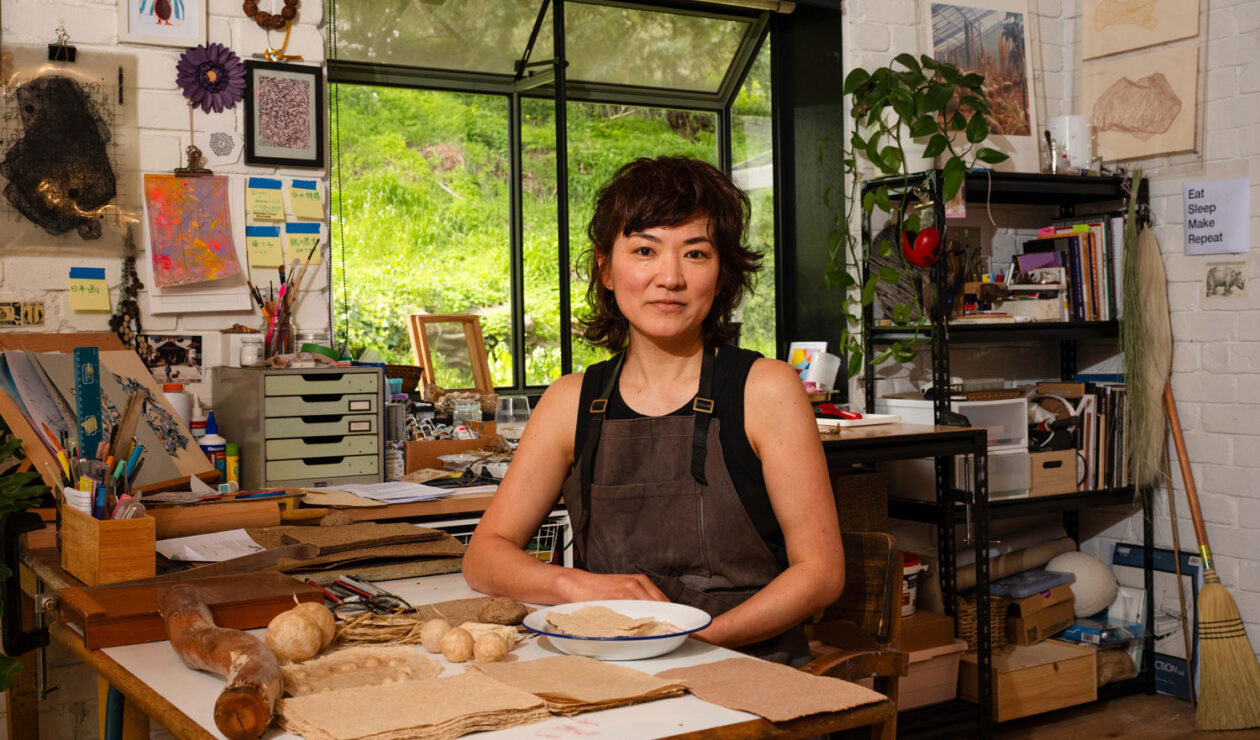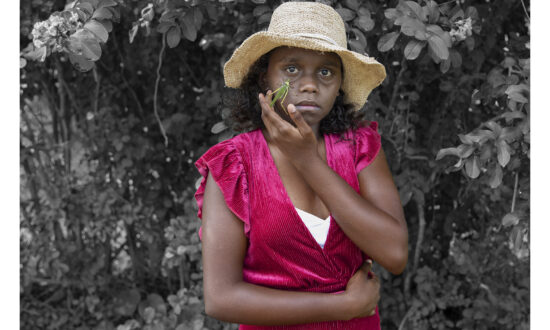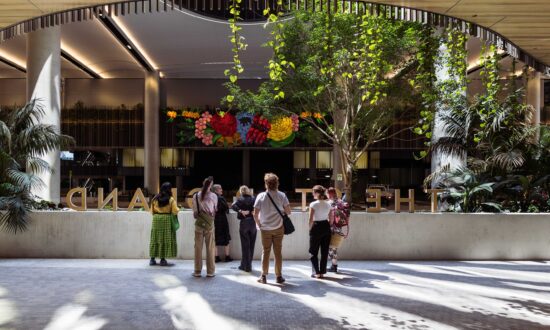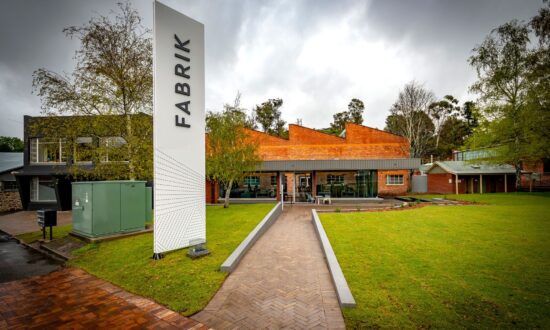After two decades as a jewellery maker, Kyoko Hashimoto recently decided to turn over a new leaf.
Her award-winning jewellery practice, which often focussed on “place-based making” using materials found in her local environment, had taken her around the world and won plenty of praise, but after 20 years she was quite literally sick of it.
“I got sick, and I took a break from jewellery-making for 12 months,” she says. “I was kind of sick of all the toxins that are involved in jewellery practice, and wanted to explore a medium that was a little bit softer on your body.”
After being awarded the 2023 Guildhouse Fellowship, the Japanese Australian artist decided to spend a year exploring the medium of paper, while still retaining her focus on place, environment, and sustainability.
“There’s a real pleasure in making something from scratch that I really get a kick out of,” she says.
“If you look at the industrial production of paper, it’s full of binders and toxic chemicals – you think paper’s quite neutral and safe or something, but it’s not really if you look at it on a chemical and molecular level. I mean, when you see paper, and you see a tree… there’s no recognition.
“So I’m looking at the history of paper-making from the Eastern and Western historical perspective, doing all the historical analysis, and then trying to produce paper from my immediate environment, basically.”
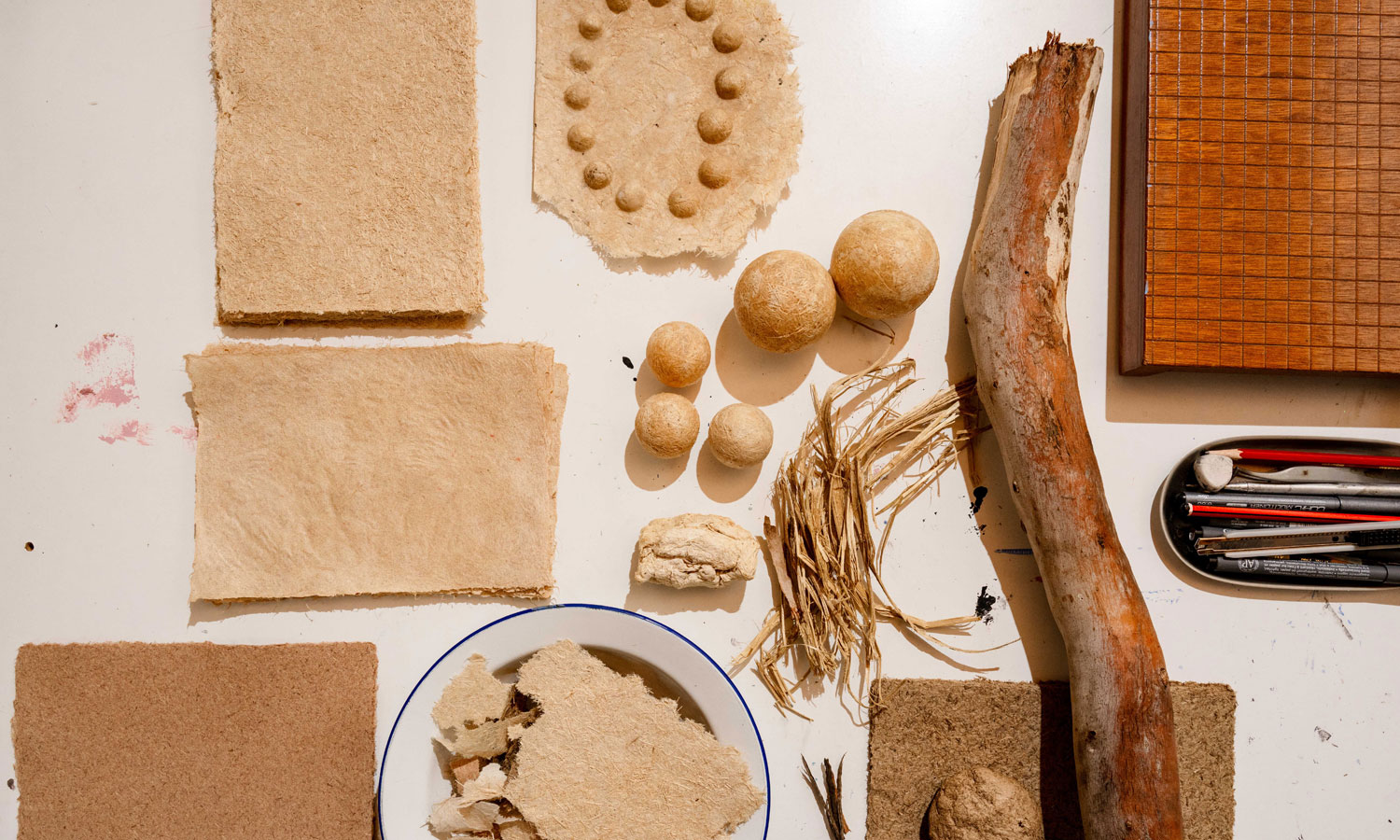
Kyoko Hashimoto is experimenting with making paper from scratch. Photo: Jack Fenby
This artistic pivot was also in response to a more literal move, as Hashimoto and her partner and long-time collaborator Guy Keulemans – joint winners of the 2022 Waterhouse Natural Science Art Prize – relocated from a two-bedroom apartment in Sydney to a hillside property in Mount Osmond in the foothills of Kaurna Country.
Trading concrete and urban noise for gum trees and open air, this new and relatively secluded spot, surrounded by native vegetation and wildlife, has proved the perfect place for Hashimoto’s year of experimentation.
While her jewellery-making tools are downstairs in a studio tucked underneath the main house, her paper work usually takes place out in the open air, or in a home office overlooking the kitchen that she shares with Keulemans, their two children, and the cat.
“This was a tree that fell in my yard,” she says, pointing to a recently completed sheet of hand-made paper. It’s fibrous and mottled, and unlike the reams of clean white paper at your local office supplies store, each one is unique.
“I shred it to make finer pieces, and then I process that into paper, essentially. And then from there, I’m also looking at the history of paper mache, making objects from paper, and also producing prints.
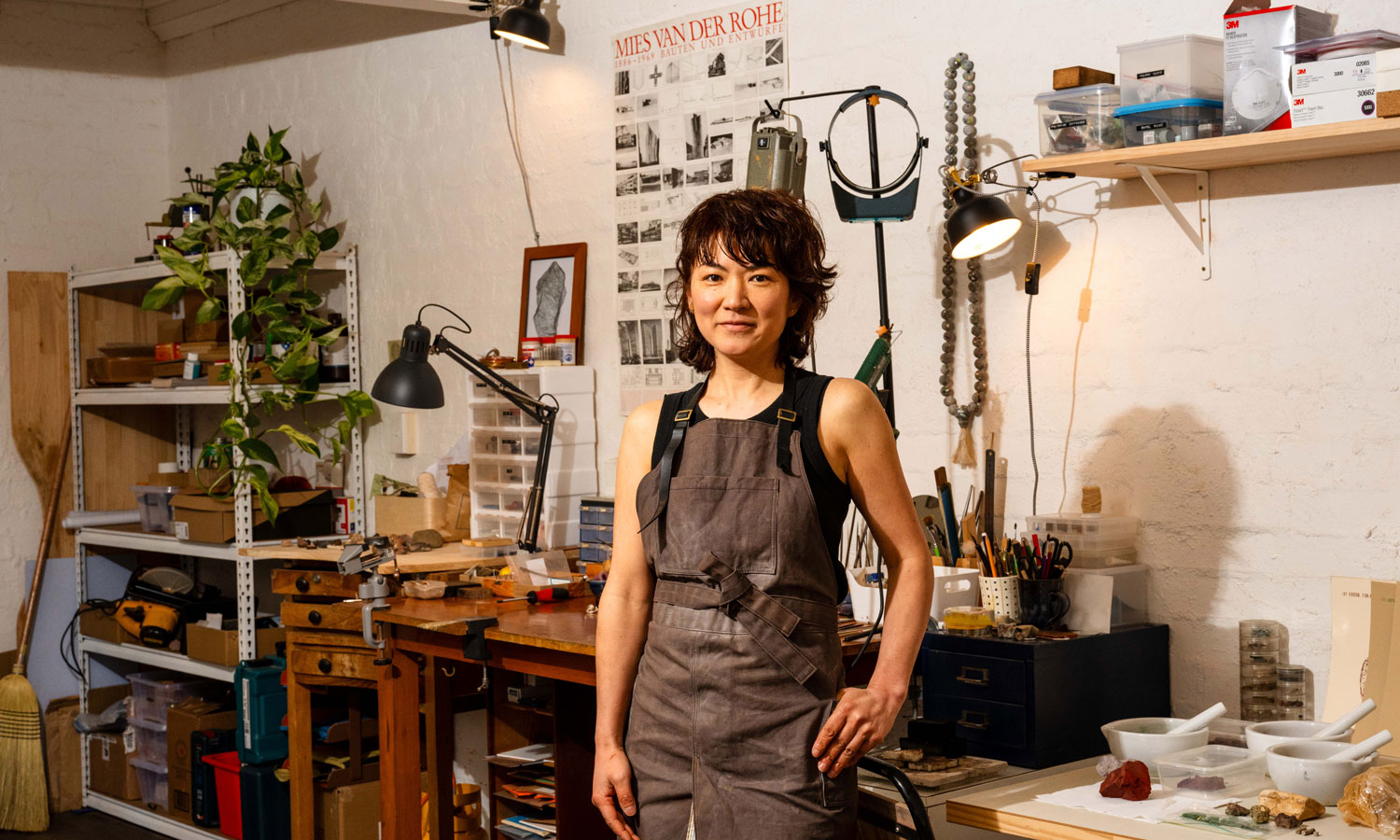
Jeweller and paper-maker Hashimoto in her studio. Photo: Jack Fenby
Her work responds to the Mount Osmond environment in other ways, reflecting on its history as a site of early colonial mineral extraction by using metal-based inks.
“They found silver and lead ore, and shipped it to England for processing,” she explains. “So there’s that colonial history, but also the deep, deep time history I’m really interested in. So thinking about, you know, what’s under your feet, basically, and visually expressing that.”
Hashimoto hands me a beige-coloured orb that sits lightly in the hand like an oversized ping-pong ball. Its surface is made of shredded fibres that catch the sunlight streaming in from the garden.
“This is a sphere made from eucalyptus that fell in our yard – it’s literally just been pounded and cooked so the fibre’s been broken down. And then I use potato starch as a binder – we grow potatoes here now, and I extract the starch. So it’s all natural; everything’s from this land, and I’m envisioning the spheres will probably become a large-scale neck-piece or something.”
Perhaps Hashimoto’s most intriguing experiment in papermaking comes from another locally sourced, relatively abundant, and completely renewable resource.
“I don’t know if this is a bit gross, but I thought, what else is in my environment that I can potentially make paper from? I read that you can use elephant droppings to make paper… so this one is actually made from koala poop.”
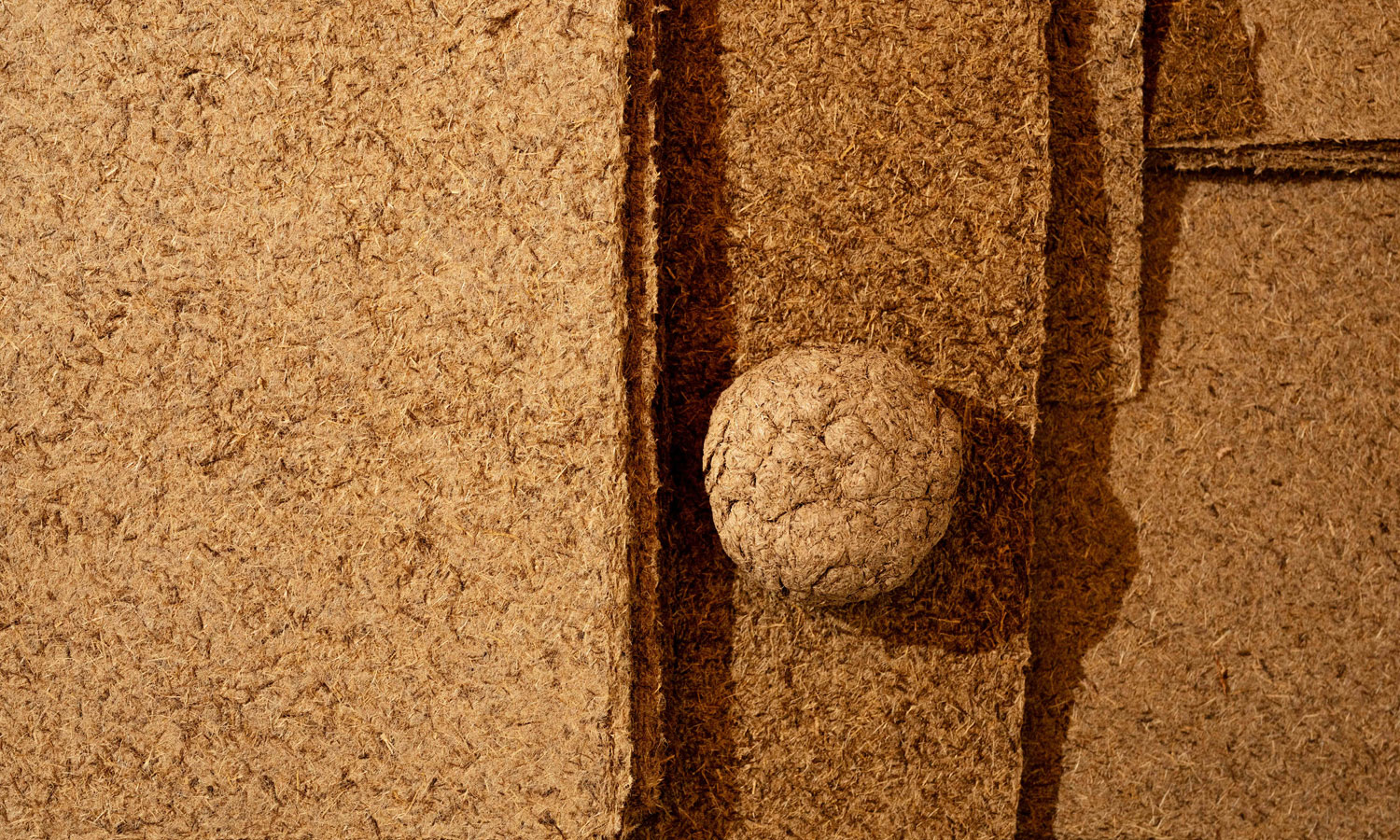
All natural: Koala droppings have proven an unusual raw material. Photo: Jack Fenby
She carefully unveils a handful of fragile brown sheets that smell faintly of eucalyptus, made from the scat of neighbourhood koalas, who she says produce up to 360 pellets per day. (“They even poop in their sleep,” she says.) Hashimoto collects the dung on her walks, then washes and cooks the raw material – since wood has to be shredded and processed to make paper anyway, the koalas are already performing part of the process.
“I thought maybe I’m the first person in the world who makes paper out of koala poo, which is like, kind of cool.
“As an artist, you always need materials to work with, and I think it’s interesting to see how much you can get from your local environment – then you know exactly where it came from. As an artist, as a person, I thought, ‘I feel good about that’.”
Hashimoto will eventually exhibit a body of work at the Art Gallery of South Australia as part of the Guildhouse Fellowship, but for now she is enjoying the process – poop and all.
“I’m in the middle of it, so I can’t quite see how it would look in the end,” she says. “But I’m just having fun exploring.”

Get InReview in your inbox – free each Saturday. Local arts and culture – covered.
Thanks for signing up to the InReview newsletter.
Read more about Kyoko Hashimoto’s practice on the artist’s website.
In the Studio is a regular series presented by InReview in partnership with not-for-profit organisation Guildhouse (see previous stories here). The callout is open (details here) until September 30 for the 2024 Guildhouse Fellowship, which is valued at more than $50,000 and is awarded to a South Australian mid-career visual artist, craftsperson or designer.
Support local arts journalism
Your support will help us continue the important work of InReview in publishing free professional journalism that celebrates, interrogates and amplifies arts and culture in South Australia.
Donate Here
